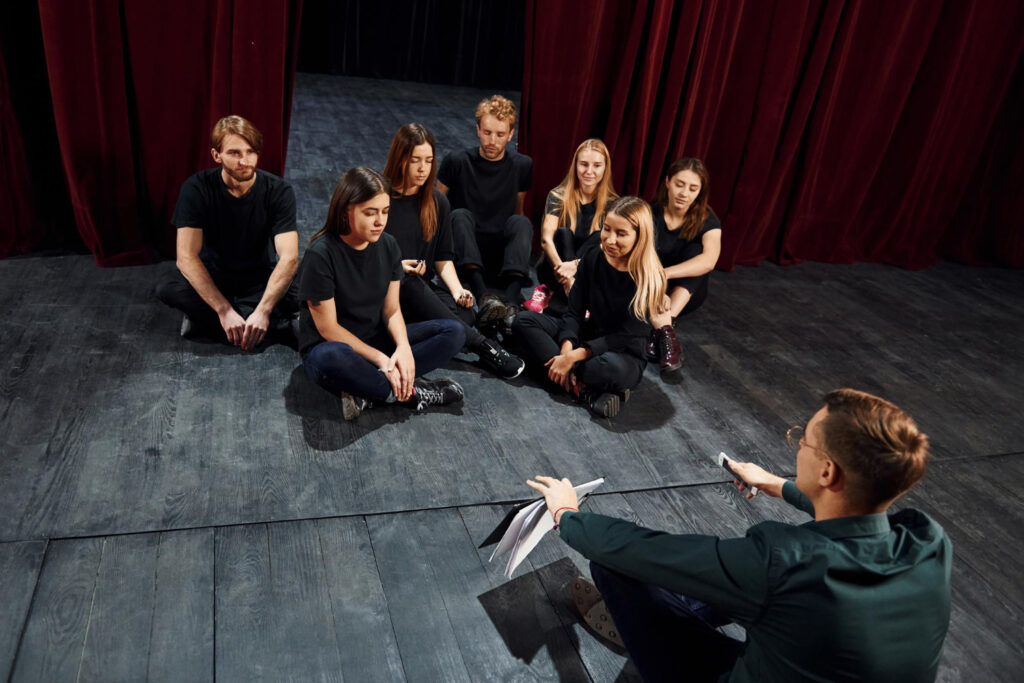
Drama Skills in Four Key Areas: A Beginner’s Guide
Welcome to the intriguing world of theatre. If you’re new here and wondering about the essential skills that drive this captivating art form, you’re in the right place. In this beginner’s guide, we’ll explore the four key areas of drama skills: acting, devising, directing, and critiquing. These skills form the backbone of theatre, helping actors, directors, writers, and critics bring the stage to life. Join us on this informative journey to uncover the basics that will ignite your passion for the dramatic arts.
The Art of Acting
Movement: Where Body Becomes Expression
The stage is a canvas, and the actor’s body is the brush. To master the art of acting, one must understand the nuances of movement. Every gesture, posture, and step carries meaning. The body becomes a vessel through which emotions are conveyed, and characters come to life.
Tip: Practice physicality in everyday life; observe how posture and body language convey different emotions. Mimic and experiment to expand your range.
Voice: The Instrument of Emotion
Voice modulation is the actor’s secret weapon. Whether a soft whisper or a thundering roar, the voice carries the emotional weight of the character. Learning to control pitch, tone, and volume is essential for portraying depth and authenticity.
Tip: Read aloud, recite poetry, or even try tongue twisters to enhance your vocal dexterity.
Stagecraft: Crafting the Visual Story
Behind every remarkable performance lies the craftsmanship of stagecraft. This skill involves understanding the technical aspects of theatre, including lighting, props, and set design. A keen eye for detail ensures that the stage becomes a seamless extension of the narrative.
Tip: Volunteer or intern at a local theatre to get hands-on experience with stagecraft.
Ensemble Work: The Power of Collaboration
Acting is not a solitary endeavor. Ensemble work is about forging connections with fellow actors, harmonizing emotions, and creating a unified experience for the audience. Teamwork is the key to a successful production.
Tip: Engage in group acting exercises and workshops to build trust and rapport with your fellow actors.
The Art of Devising
Planning: The Blueprint of Creativity
Devising is the process of creating original theatrical works from scratch. It all begins with planning – brainstorming ideas, themes, and concepts. Think of it as laying the foundation of a house of imagination.
Tip: Keep a notebook handy to jot down your ideas as they come. Inspiration often strikes at unexpected moments.
Structuring: Giving Shape to Chaos
Structuring is about organizing the chaos of ideas into a coherent narrative. It involves deciding the order of scenes, character arcs, and dramatic tension. A well-structured piece captivates and engages the audience.
Tip: Experiment with different story structures, from linear to non-linear, to find what suits your creative vision.
Documenting and Scriptwriting: Preserving the Magic
Documentation is the art of recording the creative process. This includes keeping journals, notes, and sketches. Scriptwriting then transforms the devised work into a tangible script, allowing others to recreate the magic.
Tip: Consider taking a scriptwriting course to enhance your storytelling skills.
The Art of Directing
Articulating Vision: The Director’s Manifesto
Directing is about translating your vision into reality. It involves articulating the overall concept, style, and emotional tone of the production. The director is the guiding force behind the scenes.
Tip: Study the works of renowned directors to understand their unique styles and approaches.
Observing and Interpreting Text: Reading Between the Lines
Directors must possess a deep understanding of the script. They must dissect and interpret the text, identifying the subtext, themes, and character motivations. This insight guides their direction of actors.
Tip: Join a script analysis group or participate in reading circles to hone your interpretation skills.
Questioning and Shaping: Molding the Performance
Directors ask probing questions that challenge actors and push them to deliver their best. They work on character development, blocking, and staging, molding each scene like a sculptor shaping clay.
Tip: Learn to provide constructive feedback that encourages growth and creativity in your actors.
The Art of Critiquing
Analysing: Breaking Down the Performance
Critiquing involves dissecting a theatrical work to understand its strengths and weaknesses. It’s about identifying the nuances of acting, directing, and production values. An effective critique is grounded in thoughtful analysis.
Tip: Attend as many productions as possible, both good and bad, to refine your analytical skills.
Synthesising: Connecting the Dots
Synthesizing takes the analysis a step further. It’s about connecting the dots between different elements of a production – how acting influences directing, how staging enhances storytelling, and so on.
Tip: Engage in discussions with fellow theatre enthusiasts to gain different perspectives and insights.
Evaluating and Justifying: Constructive Critique
Evaluating a theatrical work means forming opinions based on analysis and synthesis. Justifying these opinions with evidence is crucial for providing constructive feedback that helps the theatre community grow.
Tip: Always balance criticism with praise. Highlight what worked well alongside areas that could be improved.
In the world of theatre, these skills are not only the foundation for creating compelling performances but also the tools that enable audiences to appreciate the intricate nuances of theatre. Whether you’re drawn to the spotlight, the director’s chair, the writer’s desk, or the critic’s seat, these fundamental skills will deepen your connection to the captivating world of theatre.






